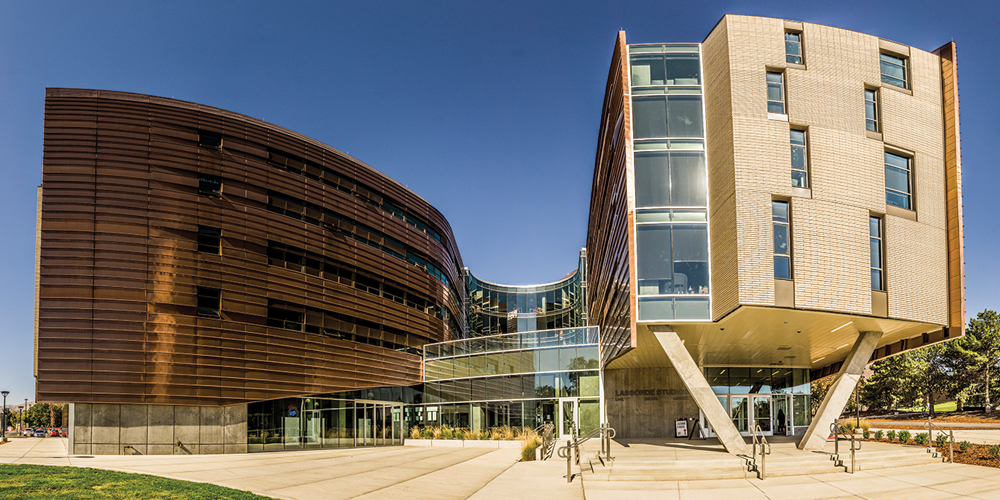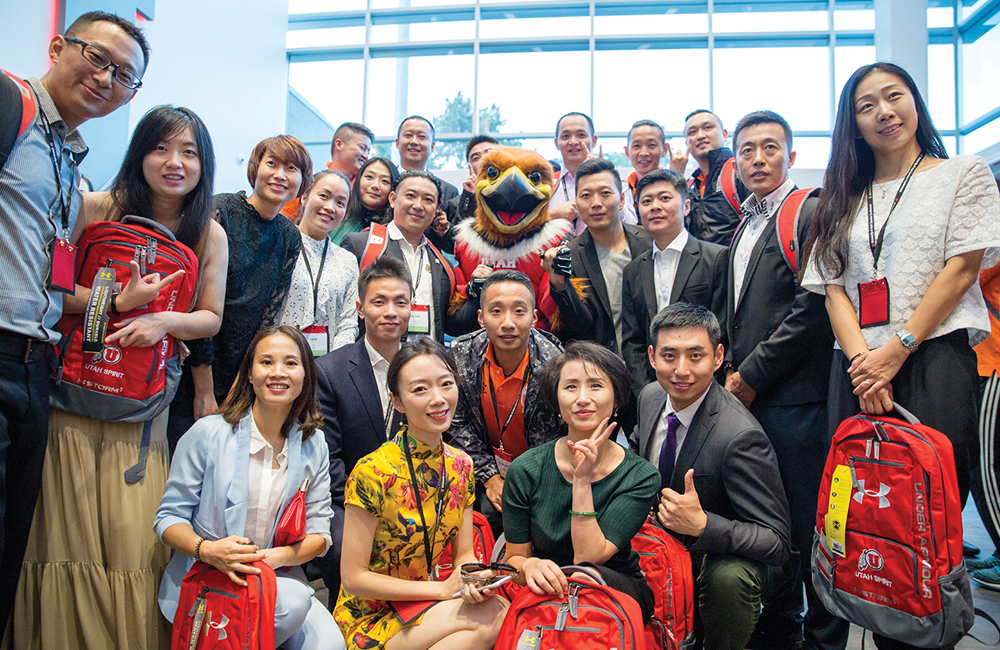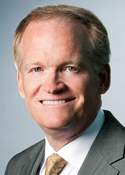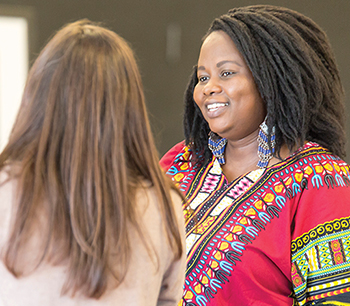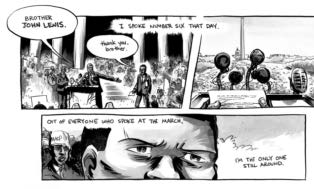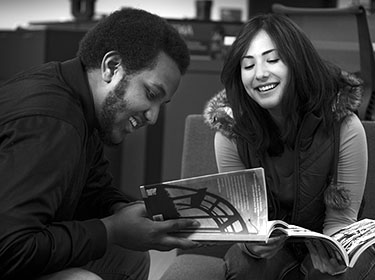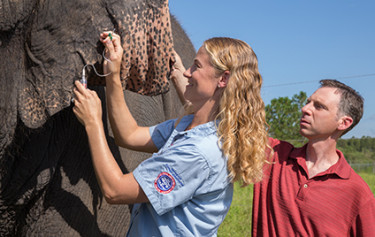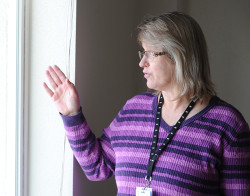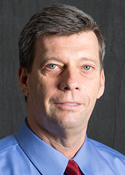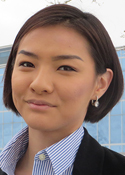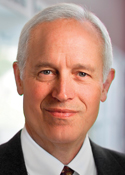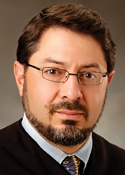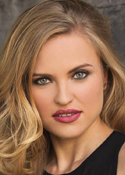From where he stood observing the surgery, Brody King could see that the product the surgeon was squirting into the patient’s body would be ineffective at preventing scar tissue adhesions. It was too liquid to work after going through the tiny laparoscopic incision. A few months later, King launched a company, XLynk Surgical, to work on a better product, and he brought on a chemical engineering friend, Jordan Davis, to help with the chemistry. Soon, they had devised a solution that could be sprayed into the body and cover an affected area without dripping away before it could do any good.
After speaking with several physicians and pharmaceutical chemists, King and Jordan partnered with Dr. Raminder Nirula, chief of Acute Care Surgery at the U, and then hired Arielle Hassett to tackle marketing. Now, King, Davis, and Hassett (along with Nirula) are plotting their multi-year path through development, clinical studies, and FDA approval. Not bad for three University of Utah undergrads still juggling classes, homework, and part-time jobs. XLynk Surgical is just one of more than 700 student startup teams supported by the U’s Lassonde Entrepreneur Institute.

Giving entrepreneurship a boost
In 2001, gold mining and investment legend Pierre Lassonde MBA’73 donated $30,000 to the U’s David Eccles School of Business to honor his late wife, Claudette MacKay-Lassonde MS’73. Pierre and Claudette had left Canada in 1971 to pursue master’s degrees at the U (hers in nuclear engineering). Pierre credits his MBA as being the most important degree he’s received, setting him on a path toward success, and he wanted his donation to reflect his and his wife’s melded passions for business and science by creating an interdisciplinary entrepreneur center. The Pierre and Claudette MacKay Lassonde New Venture Development Center would help graduate students develop business plans to commercialize faculty innovations.
By 2006, students were coming to the center asking for help launching their ideas. So Lassonde gifted $13 million more to expand the entrepreneur program. Only five years later, the U hit the Princeton Review’s top 25 universities for entrepreneurship (where it has remained every year since).
Then the Great Recession hit, and technology and the Internet were changing how businesses operated. “Students were coming to us saying, ‘I’m probably going to have to create my own future and control my own destiny, and I need the tools to do that,’ ” says Troy D’Ambrosio BA’82, executive director of what is now called the Lassonde Entrepreneur Institute.
And further, just being on par with other entrepreneur programs wasn’t good enough for Lassonde or the U. So in 2013, Lassonde returned to the university with a question. What could we do to push the U’s program to the forefront of entrepreneur education, allowing it to compete with not just other universities, but with the growing popularity of online programs?
Taylor Randall HBA’90, dean of the U’s business school, says, “We were tasked with coming up with something unique and different that would bolster the University of Utah’s reputation and take us decades ahead.” First, the center needed a physical location to make its programs more visible. Next, Randall, D’Ambrosio, and Lassonde wanted an innovation space (also called “maker” space)—labs and workshops where students can build and test ideas. Finally, they wanted to try something new: to fold in a residential component where innovators could live and work together.
Yet no one was quite sure what all of that should look like. So they turned to the students. And what they came up with was an innovative approach to innovation, and the perfect building to house it all in.

In the the heart of the Lassonde Studios is the Neeleman Hangar, a 20,000-square-foot “maker space”—think of a cross between lab space, workshops, and a rec room, complete with pool table and a 24-hour cafe. (Photo by Trina Knudsen)
A world-class innovation incubator
The 160,000-square-foot, $45 million Lassonde Studios building opened in August 2016. Its upper floors—the residence floors—are sheathed in copper, and they float above a ground floor encased in glass, where natural light illuminates students studying in small groups, using the woodshop or metal-working tools, 3D printing a prototype of their latest idea, grabbing a meal at the Miller Cafe, and maybe testing out a video game. In offices scattered around the floor, businesses are hatching, with brainstorming ideas sketched in dry-erase marker on glass walls, products stacked on desks, and help-wanted notices scribbled on a community white board.
It looks like the headquarters of a hip technology company. It definitely does not look like a typical college dorm.
As a freshman, Adam Shelton lived in the Lassonde Studios last year and worked with two other freshmen on a phone app startup company. “Whoever designed the building was very ingenious about the social aspects of how people interact,” he says.
That genius? Turns out it was students just like Shelton, whose ideas designer Mehrdad Yazdani tapped for direction. Yazdani, design principal at Yazdani Studio of CannonDesign, says, “What was intriguing to me was the notion of creating a living and ‘making’ environment for student entrepreneurs on the campus, which is rather unique on university campuses.”
Buildings are usually based on how similar spaces were used historically. Yazdani and his colleagues, along with architect of record EDA Architects in Salt Lake City, reversed that process, first identifying the culture of the students who would be living and creating there, then designing the building around that culture.

Students at work making their own prototypes in one of the many workshops at the Lassonde Studios. (Photo by Trina Knudsen)
When asked what they wanted in living and creative areas, students requested “spaces that were non-institutional, spaces that students can make their own, spaces that were not intimidating, spaces that promoted easy collaboration and interaction,” says Yazdani. “It’s important that students feel comfortable. That doesn’t mean plush carpets or plush furniture, but spaces where they can make a mess. If an idea comes to them, they can immediately set it up, and they don’t have to worry about spilling something on the carpet.”
The resulting building blurs the line between living and working, immersing students in a unique, collaborative environment. The residence areas are designed for maximum interaction, with single, double, pod, and loft dorm rooms clustered around common areas with kitchens, tables, and seating areas. These open, sunshine-filled common areas entice the 400 residents out of their rooms to join study groups or brainstorming sessions, or just to socialize. Each residence floor has a separate theme: Sustainability and Global Impact; Products, Design & Arts; Adventure and Gear; and Games and Digital Media.
Downstairs, the heart of the Lassonde Studios is the Neeleman Hangar, a 20,000-square-foot “maker space”—think of a cross between lab space, workshops, and a rec room, complete with pool table and a 24-hour cafe. But it wasn’t enough to provide the workshop space. D’Ambrosio and his colleagues filled it with hand tools, sewing machines, metal and wood-working equipment, and whatever else might help a student launch their startup product or service. Better yet, it’s all free and available to all U students.
 One thing that’s missing? Classrooms. You won’t find faculty offices here, either. That’s because the Lassonde Institute is focused on student leadership. Walk into the 3D printer lab, and an undergrad will show you the ropes. Want to use the laser cutting tool? No problem, but first you’ll get a quick student-designed training lesson. Want to attend a workshop on writing business plans? A young scholar set up that workshop and brought in industry experts to present it. About 160 students receive scholarships to run the institute’s many programs.
One thing that’s missing? Classrooms. You won’t find faculty offices here, either. That’s because the Lassonde Institute is focused on student leadership. Walk into the 3D printer lab, and an undergrad will show you the ropes. Want to use the laser cutting tool? No problem, but first you’ll get a quick student-designed training lesson. Want to attend a workshop on writing business plans? A young scholar set up that workshop and brought in industry experts to present it. About 160 students receive scholarships to run the institute’s many programs.
The Lassonde Institute is more than just a building, but the building allows the institute to attract attention from students, other universities (more than 100 have toured the Lassonde Studios), and the business world. Named one of the “nine best new university buildings around the world” by Architectural Digest, the building has appeared in Fast Company and The New York Times. The institute is ranked first in the country for aspiring entrepreneurs by LendEDU, first for technology commercialization by the Milken Institute, and 15th in entrepreneurship programs for graduate students and 18th for undergraduates by the Princeton Review.
In addition to Pierre Lassonde and the Lassonde Family Foundation, other major donors and partners including alum David Neeleman ex’81 ( founder of JetBlue), the Larry H. & Gail Miller Family Foundation, Zions Bank, the Fidelity Foundation, the Kahlert Foundation, and University of Utah Housing & Residential Education have helped the Lassonde Entrepreneur Institute and the new Lassonde Studios become “world class and cutting edge in terms of student entrepreneur education,” says Dean Randall. “This building is remarkable in terms of gaining visibility. It lets us showcase what we think are the best practices in teaching entrepreneurship.” Ruth Watkins, vice president of academic affairs, agrees: “It was immediately clear that the Lassonde Studios would be transformative for the U—a facility that would bring together entrepreneurs and innovators from all fields of study to live, learn, and create together. And all of that in the context of a stunning building.”
Eliminating barriers
As stunning as the facility is, all the space, tools, and 3 a.m. pizza in the world won’t get a startup off the ground without the know-how to pull it together. That’s why Lassonde Institute resources include workshops on topics like writing executive summaries, using Adobe Creative Suite, or finding a social cause. Students are paired with mentors and experts such as attorneys, venture capitalists, designers, and marketers.
Get Seeded, a monthly micro-grant competition sponsored by Zions Bank, lets students apply for grants to jumpstart their projects. Last year, 49 student startups shared $100,000 in Get Seeded funding. “Get Seeded was my first real experience at the Lassonde Institute,” says King, whose company XLynk Surgical is actually his third startup. “From there, it was like, ‘Come to our mentors workshop.’ I met with the director of software development at Adobe. Then I met with IP [intellectual property] lawyers, and then I met all of these other people. It was like this chain of reactions. You can get anything you need just by being involved. It doesn’t cost me anything. I don’t pay extra tuition for it. It’s just something I can do whenever I have the time, which is awesome.”
It all adds up to an ideal minimal-risk environment for students to explore the entrepreneurial world. Many student startups may not succeed. Many real-world startups fail, too. But here, failures are embraced as learning experiences. “You can be a fine arts student or an engineering student, and you can come in here and get engaged, run a business, and get that experience,” says D’Ambrosio. “You might fail, you might succeed, but nobody rides a bike the first time. This is a safe place to try, test, experiment, and not be penalized for failure.”
Such real-world experience helps students stand out in the job market. “It’s the skill building at this point that’s really valuable,” says XLynk Surgical’s Hassett, whose role in the medical device startup has expanded from making videos and presentations for potential investors to supporting every facet of the business, including helping with the general design and building of the prototype. “Your idea doesn’t have to be amazing. They just want to see that you have an idea, and that you have your next milestone that you want to get to, so that you can try it and see if it works.” As a bioengineering and modern dance double major, Hassett had never considered entrepreneurship until King hired her. Now she’s hooked, and she’s co-directing the institute’s Utah Entrepreneur Series competitions.

JoCee Porter started and runs her own business renting prom dresses to underprivileged high school students. (Photo courtesy JoCee Porter)
Entrepreneurship isn’t just for technology. JoCee Porter, a computer engineering major, started a nonprofit in her parents’ basement while in high school. Loaning a prom dress to a financially struggling student blossomed into a full-blown nonprofit entity called Celebrate Everyday, providing hundreds of free prom dresses to underprivileged populations. “I was running my nonprofit every day, but I didn’t know what business was; I had no interest in it,” she says. “Going into Lassonde, I realized a nonprofit needed to be run like a business. I can serve more people by using business strategies.”
Students at the institute aren’t just the ones with the big business ideas. Few people can run an entire company alone. They need help from people with different skill sets, like marketing, design, law, accounting, fundraising, programming, or manufacturing. So Lassonde is also a place where students can find each other, team up, and see where the possibilities take them. The Neeleman Hangar is a hot spot for interaction. “If you’re in the library, everybody’s kind of head down. Here it’s okay if somebody is working on something to walk up to them and interrupt them to say, ‘Hey, what are you working on? That’s really cool. Can I help you?’ or ‘Can you help me, because I’m trying to solve that same problem?’ ” explains D’Ambrosio.
The Lassonde Studios’ interactive floor plan invites hardworking students to relax, too. “If you want to make new friends, Lassonde is the place to go,” says phone app creator Shelton, a pre-med finance major and a swimmer. “It’s a very social, vibrant community. There is always something going on. Lassonde never sleeps!” The Lassonde Institute has undeniably taken the lead in entrepreneurship education. “The Lassonde Studios is a true partnership of an academic unit and student affairs,” says Watkins. “I think that this type of partnership is likely to be much more common in the future. We are fortunate to have a highly successful model of collaboration at its best.”
For students, the transformative experience can be far-reaching. “There are so many resources at Lassonde, but the biggest resource is the people,” says Porter. “In 10 years, when I start my tech company, I know my cofounder will be someone I met in this building. They’re the people I’m going to call, because they’re going to be great people in their industry, and great friends.”
—Kelley J. P. Lindberg BS’84 is a freelance writer based in Layton, Utah, and a frequent contributor to Continuum.

 Once breast cancer spreads through the body, it can degrade a patient’s healthy bones, causing numerous problems. Scientists at Huntsman Cancer Institute (HCI) at the University of Utah have identified a new way that bones get destroyed through cancer. And they’ve also learned how to block that destruction with a new drug. Initial tests with patients show promising results.
Once breast cancer spreads through the body, it can degrade a patient’s healthy bones, causing numerous problems. Scientists at Huntsman Cancer Institute (HCI) at the University of Utah have identified a new way that bones get destroyed through cancer. And they’ve also learned how to block that destruction with a new drug. Initial tests with patients show promising results.
 For millions of sufferers, there is nothing more debilitating than chronic back or joint pain. It can feel like a lifetime of misery. But
For millions of sufferers, there is nothing more debilitating than chronic back or joint pain. It can feel like a lifetime of misery. But 